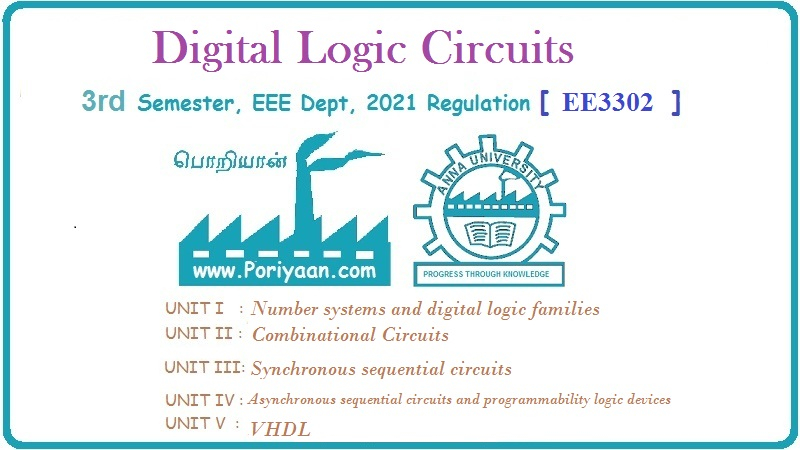Digital Logic Circuits: Unit IV: (b) Hazards and Errors in Digital Circuits
Two Marks Questions with Answers
Hazards and Errors in Digital Circuits | Digital Logic Circuits
Digital Logic Circuits: Unit IV: (b) Hazards and Errors in Digital Circuits : Two Marks Questions with Answers
Two Marks Questions with Answers
Q.1
What are hazards ?
Ans.
:
The unwanted switching transients (glitches) that may appear at the output of a
circuit are called Hazards.
Q.2
What are the two types of hazards ?
Ans.
:
The two types of hazards are :
1.
Static hazard
2.
Dynamic hazard.
Q.3
What is static hazard ?
Ans.
:
A static hazard exists if a signal is supposed to remain at particular logic
value when an input variable changes its value, but instead the signal undergoes
a momentary change in its required value.
Q.4
What are static-0 and static-1 hazards ?
AU
: May-13, 15
Ans.
:
In a combinational circuit, if output goes momentarily 0 when it should remain
a 1, the hazard is known as static-1 hazard. On the other hand, if output goes
momentarily 1 when it should remain a 0, the hazard is known as static-0
hazard.
Q.5
Explain dynamic hazard.
Ans.
:
The hazard in which output changes three or more times when it should change
from 1 to 0 or from 0 to 1 is called dynamic hazard.
Q.6
What is the cause of essential hazard ?
AU
: May-03, 12, Dec.-04
Ans.
:
An essential hazard is caused by unequal delays along two or more paths that
originate from the same input. Such hazards can be eliminated by adjusting the
amount of delays in the affected path.
Digital Logic Circuits: Unit IV: (b) Hazards and Errors in Digital Circuits : Tag: : Hazards and Errors in Digital Circuits | Digital Logic Circuits - Two Marks Questions with Answers
Related Topics
Related Subjects
Digital Logic Circuits
EE3302 3rd Semester EEE Dept | 2021 Regulation | 3rd Semester EEE Dept 2021 Regulation
